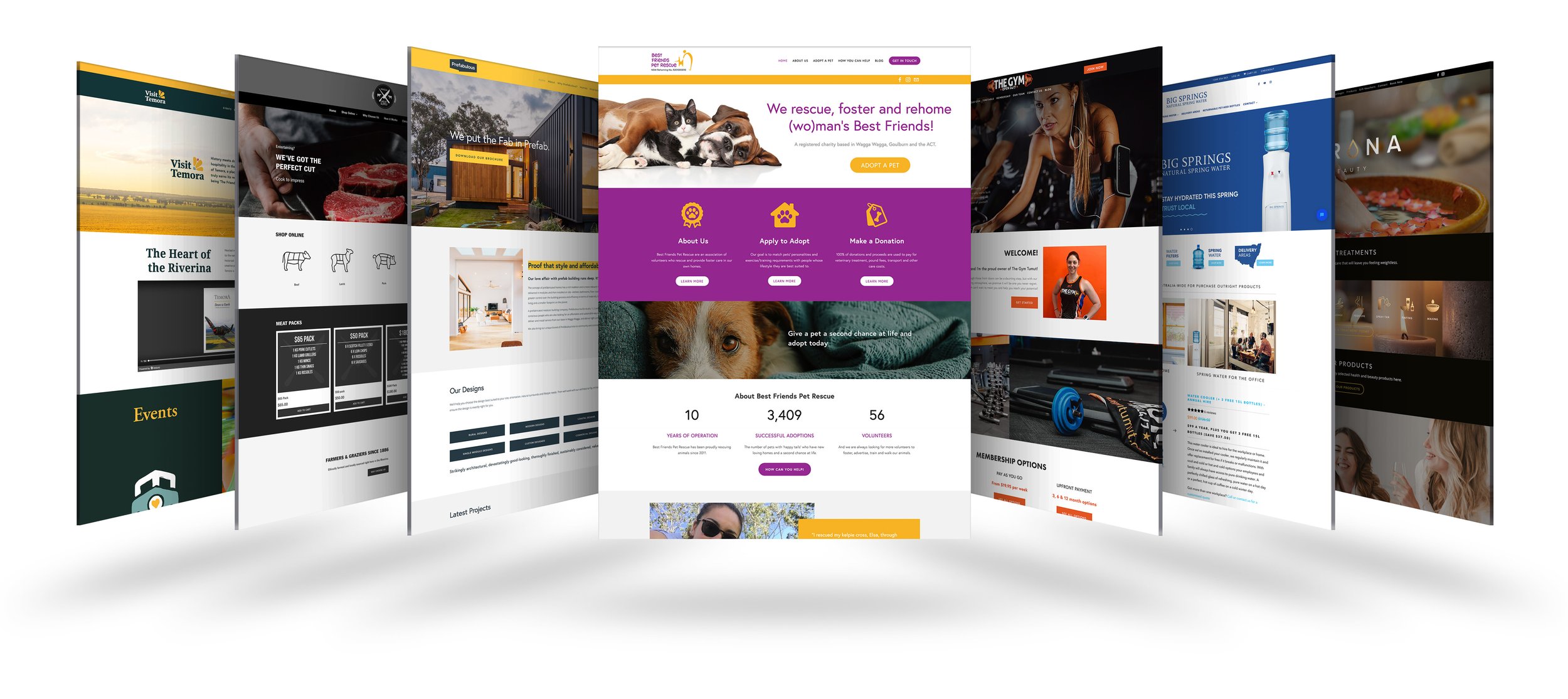How Website Design Impacts Brand Perception and Trustworthiness
How Website Design Impacts Brand Perception and Trustworthiness
Blog Article
The Ultimate Overview to Modern Website Style Trends
In the ever-evolving digital landscape, modern-day internet site design patterns play an essential duty in shaping user experience and engagement. From the surge of minimal style concepts that prioritize simpleness to the influence of bold typography in defining brand name identity, each component adds to a cohesive on the internet visibility. The emphasis on receptive and mobile-first strategies, alongside ingenious microinteractions, additionally boosts functionality. The growing focus on lasting internet layout practices mirrors a dedication to ecological duty. These patterns collectively raise crucial concerns regarding the future of efficient internet style and what it implies for businesses and customers alike.
Minimalist Design Principles
Minimal layout concepts stress the concept that less is more, advocating for simpleness and capability in visual interaction. This technique remove unnecessary components, focusing instead on necessary parts that convey the desired message effectively. By focusing on quality, minimalist design enhances individual experience, enabling visitors to browse websites effortlessly.
Core tenets of minimal style consist of the use of ample white space, which creates a sense of equilibrium and company. This adverse room not only routes the audience's focus to vital aspects however additionally fosters a calming visual atmosphere. In addition, a minimal shade combination is commonly utilized, making use of single schemes or soft hues to preserve aesthetic cohesion and protect against frustrating the individual.
Typography plays a vital duty in minimal style, where understandable font styles are chosen for their simpleness and efficiency in connecting material. Graphics and images are used sparingly, making sure that they serve a purpose rather than sidetrack from the overall message. Eventually, minimal design concepts grow a concentrated environment that urges users to involve with the content, boosting the overall effectiveness of modern-day internet site design. This fad reflects a growing gratitude for thoughtful, user-centric aesthetic appeals in electronic spaces.
Vibrant Typography Choices
Accepting strong typography options has actually ended up being a defining feature of modern web site style, as it effectively records attention and communicates solid messaging. Designers are progressively utilizing typography not just as a useful aspect however as a crucial visual element that boosts the total visual and individual experience.

In addition, the juxtaposition of vibrant typography with minimalist style principles enables striking contrasts, enhancing readability while keeping visual appeal. The use of whitespace around strong text even more emphasizes its significance, making certain that the message reverberates with the audience.
As digital landscapes become a lot more affordable, leveraging strong typography makes it possible for brands to separate themselves and leave a long lasting perception. The cautious selection of font styles and their application can evoke emotions, develop tone, and drive action, making strong typography a crucial device in modern website design. Ultimately, it is a powerful means to boost storytelling and guarantee that crucial messages are not only seen however likewise really felt.
Mobile-first and receptive Layout
Mobile-first and responsive style has actually become an important concept in contemporary site development, showing the increasing dependence on mobile tools for accessing on the internet content. As customer actions changes in the direction of mobile browsing, designers have to prioritize creating experiences that adjust effortlessly throughout various screen dimensions and resolutions.
A responsive style ensures that an internet site automatically adjusts its layout, images, and capability based on the device being made use of. This approach boosts customer experience by providing consistent navigating and readability, irrespective of whether the visitor is on a desktop, tablet, or smart device computer system. Mobile-first design supporters for establishing web sites initially for smaller displays, ultimately scaling up to larger screens. This technique urges a much more streamlined and effective style procedure, concentrating on important web content and performance initially.
Implementing responsive and mobile-first concepts not only accommodates customer choices yet also lines up with search engine optimization (SEARCH ENGINE OPTIMIZATION) methods. Significant search engines, like Google, focus on mobile-friendly sites in their positions, making it vital for companies to take on these design approaches. In an affordable digital landscape, accepting mobile-first and receptive design is not simply an alternative; it is essential for guaranteeing access and involvement with a diverse target market.
Engaging Microinteractions
Microinteractions play a crucial role in boosting user interaction and general site experience, specifically in the context of responsive and mobile-first style. These subtle layout aspects provide immediate comments to individuals, making interactions extra pleasurable and intuitive. Examples include switch computer animations, alert alerts, and filling signs, which not only guide individuals however also produce a sense of connection with the interface.
Including engaging microinteractions can dramatically enhance functionality by decreasing cognitive tons. When users receive acoustic or visual comments upon performing activities, such as clicking a button or submitting a form, they feel extra positive in their find this selections. This fosters a smoother navigating experience, ultimately increasing customer retention.

As website layout trends remain to advance, the value of microinteractions can not be overemphasized. They act as the refined yet effective touchpoints that change regular interactions into remarkable experiences, therefore elevating the overall effectiveness of modern web style.
Sustainable Website Design Practices
Sustainable website design methods are coming to be increasingly vital as the electronic landscape expands and ecological concerns climb. Developers and programmers are recognizing their duty to produce web sites have a peek at these guys that not just offer user demands yet likewise reduce ecological influence. This technique includes numerous key techniques.
Firstly, maximizing power usage is vital. Internet sites must be created to pack rapidly and efficiently, which reduces web server energy use and enhances user experience. Methods such as picture compression, minimizing HTTP demands, and making use of modern-day coding techniques add dramatically to this objective.
Second of all, choosing environment-friendly organizing companies is important - website design. Several organizing business are currently powered by renewable power resources, enabling internet sites to run in a more lasting fashion. This option mirrors a commitment to reducing carbon footprints
Additionally, adopting a minimal design can improve sustainability. Fewer aspects on a page lead to much less information transfer, which not just quickens packing times however also conserves sources.
Last but not least, promoting electronic access makes certain that internet sites get to a broader target market without unneeded bloat, aligning customer experience with environmental responsibility. By incorporating these lasting practices, web designers can dig this add favorably to both individual engagement and the planet's wellness.
Final Thought
In recap, contemporary site style trends highlight the integration of minimal concepts, strong typography, and receptive layout to boost individual experience. Adopting these fads is important for creating impactful digital experiences that resonate with individuals in an increasingly competitive online landscape.
In the ever-evolving electronic landscape, modern-day website style trends play a crucial duty in forming customer experience and interaction. By focusing on quality, minimal layout boosts individual experience, permitting visitors to navigate websites easily.
Inevitably, minimal style concepts cultivate a concentrated atmosphere that urges individuals to engage with the material, improving the overall performance of contemporary site style.Microinteractions play a pivotal function in enhancing user engagement and overall website experience, especially in the context of mobile-first and receptive design.In recap, modern site design fads stress the combination of minimalist principles, bold typography, and receptive style to improve individual experience.
Report this page